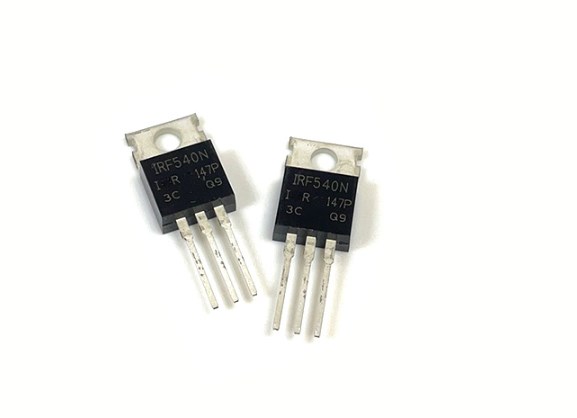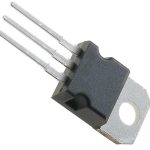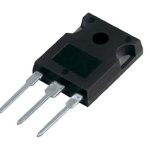IRF540N is a power MOSFET that finds its application in various high voltage and high-speed switching applications. In this article, we will show you useful information about IRF540N to help you know more and choose the right one for you.
What is IRF540N?
The IRF540N is a power MOSFET (Metal-Oxide-Semiconductor Field-Effect Transistor) designed for high-voltage, high-speed switching applications. It belongs to the N-channel enhancement mode series of MOSFETs and is commonly used in various electronic circuits.
How does IRF540 work?
The IRF540N operates based on the principle of field-effect modulation. It consists of three terminals: gate (G), drain (D), and source (S). When a voltage is applied between the gate and source (VGS), an electric field is created within the device, allowing or blocking the flow of current between the drain and source (IDS).
The MOSFET has a threshold voltage (Vth), below which it remains off and acts as an open switch. Once the gate-source voltage exceeds the threshold, the MOSFET turns on and conducts current between the drain and source. The amount of current that can flow through the MOSFET depends on the VGS and the characteristics of the device.
Special Model: IRF540NSTRLPBF
Introduction
The IRF540NSTRLPBF is a specific variant of the IRF540N MOSFET manufactured by International Rectifier (now part of Infineon Technologies). The “NSTRLPBF” suffix indicates additional specifications and features. However, without further information, it is challenging to provide a detailed introduction specific to this variant.
Pcb symbol and Footprint
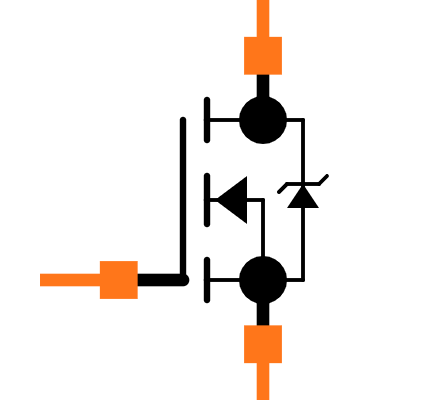
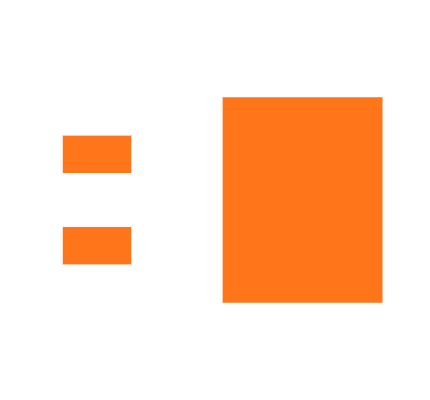
Datasheet
To know more useful information about IRF540NSTRLPBF, you can click the picture below:
What is the use of IRF540N MOSFET?
The IRF540N MOSFET is widely used in various applications due to its high voltage and current handling capabilities. Some common uses include:
- Switching applications: The IRF540N is often employed as a power switch in electronic circuits where high-current loads need to be controlled, such as motor drives, solenoid control, LED lighting, etc.
- Power supplies: It can be utilized in the input or output stages of power supply circuits, enabling efficient voltage regulation and current control.
- Audio amplifiers: The IRF540N can be employed as an output device in audio amplifiers, allowing the amplification of low-power signals to higher power levels.
- Pulse-width modulation (PWM) controllers: MOSFETs like the IRF540N are commonly used in PWM-based control circuits for applications such as motor speed control, LED dimming, and switching power supplies.
What is equivalent to an IRF540 transistor?
While there may not be a direct equivalent to the IRF540 transistor, there are other MOSFETs available that have similar specifications and characteristics. Some possible alternatives include:
- IRF530: This is another N-channel MOSFET with comparable voltage and current ratings to the IRF540N.
- IRFP250: A power MOSFET with similar voltage and current handling capabilities, often used in high-power applications.
- IRL540: This MOSFET has a similar name but differs in terms of voltage ratings. It can be a suitable alternative depending on the specific application requirements.
When selecting an equivalent MOSFET, it’s crucial to consider parameters such as maximum voltage, current rating, on-resistance, and switching characteristics to ensure compatibility with the intended circuit.
What is the function of IRF540N?
The function of the IRF540N MOSFET is to control the flow of current in electronic circuits. It acts as a switch, allowing or blocking the passage of electrical current based on the voltage applied to its gate terminal.
When the gate-source voltage exceeds the threshold voltage (Vth), the MOSFET turns on and allows current to flow between its drain and source terminals. By controlling the gate voltage, the IRF540N can regulate the amount of current flowing through it, making it useful for various applications requiring power switching or amplification.
What is the maximum voltage of IRF540?
The maximum voltage rating of the IRF540N depends on the specific variant and manufacturer. However, typical maximum voltage ratings for the IRF540N range from around 100 volts to 150 volts. It’s essential to refer to the datasheet provided by the manufacturer to obtain accurate information about the specific maximum voltage rating of a particular variant.
What is the difference between IRF540 and IRF540N?
The main difference between the IRF540 and IRF540N lies in their construction and electrical characteristics. The IRF540 is an older version of the MOSFET, while the IRF540N is an improved version. The “N” in IRF540N stands for “N-channel,” indicating that it belongs to the N-channel enhancement mode series of MOSFETs.
The IRF540N has better performance characteristics compared to the IRF540, such as lower on-resistance and improved thermal properties. The “N” series MOSFETs are commonly used due to their enhanced features and availability.
Is IRF540 a logic-level MOSFET?
No, the IRF540 is not considered a logic-level MOSFET. Logic-level MOSFETs are designed to be fully enhanced and have low on-resistance with lower gate-source voltage requirements (typically around 5 volts). On the other hand, the IRF540 requires a higher gate-source voltage (typically 10 volts or higher) to ensure proper switching and full enhancement.
While the IRF540N can be driven by a 5V logic level signal, it may not fully turn on, leading to higher power dissipation and potentially limiting its performance. Therefore, it is advisable to use a MOSFET specifically designed for logic-level applications if compatibility with lower voltage signals is required.
Conclusion
In conclusion, IRF540N is a versatile power MOSFET. Its improved performance characteristics, such as lower on-resistance and enhanced thermal properties, make it a preferred choice over IRF540. However, it’s important to note that IRF540 is not suitable for logic-level applications, as it requires higher gate voltages for proper switching. Hence, it is recommended to use MOSFETs specifically designed for logic-level operations in such scenarios.

